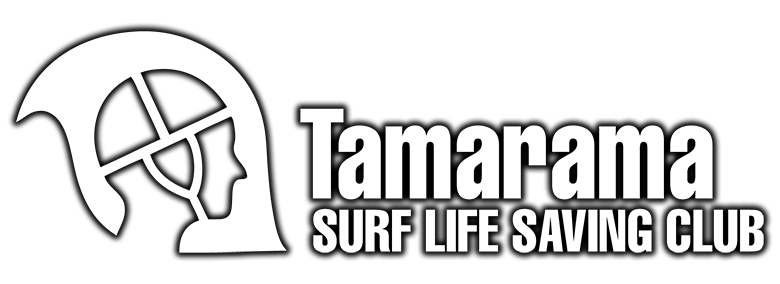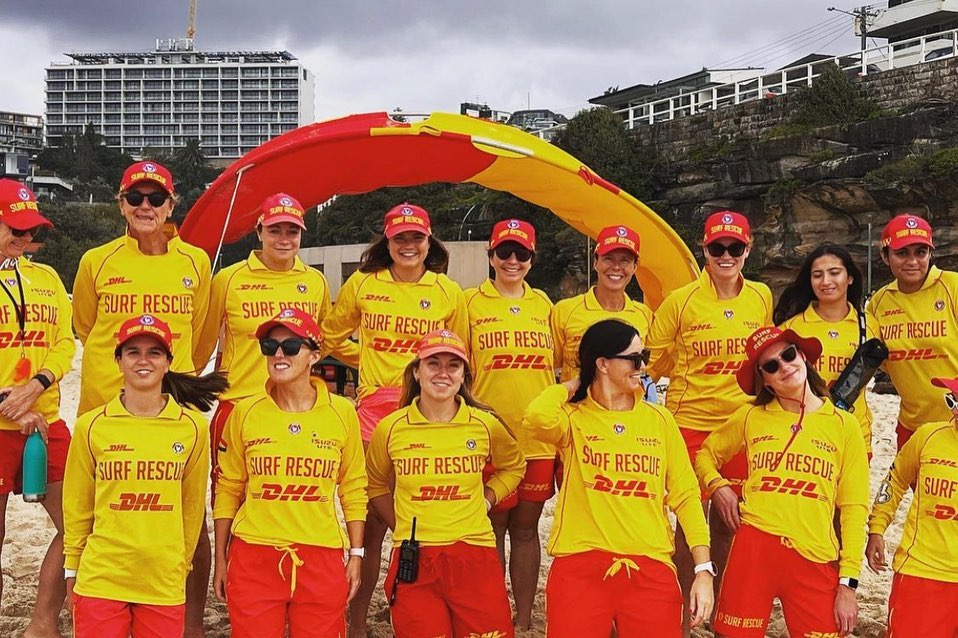

CLUB HISTORY Extracts from Sixty Years Recollections of Swimming and Surfing in the Eastern Suburbs by George Blackmore Philip, foundation President and thirty two years President of the Tamarama Surf Life Saving Club. Published 1940. “In The Beginning" Formerly known as Dixon Bay, Aquarium and Wonderland City Beach I now attempt to visualise some of my most treasured memories endeavouring to place on record its history from early records at my disposal. At the time of writing I have been unable to ascertain when the name was changed from Dixon's Bay to Tamarama, and the meaning of the word. It was by that name it was known when I first resided in Tamarama Street in the nineties of the last century overlooking the Glen to the Pacific Ocean. It was in this picturesque or beautiful setting known as Fletcher's Glen - a property that was graded and terraced to the bottom of the surrounding hills, leading to the silver sand on the edge of the waves as the Pacific Ocean washed the shore in its varying modes, surrounded by typical foliage equal in beauty to our Blue Mountains. The public access to the Bay was from the foot of Birrell Street, down a rugged incline covered by dense scrub until you reached what is known to-day as Tamarama Park, comprising eight acres with a gradual fall to the ocean beach, a small creek running through, finding its outlet across the sandy beach. The surroundings on the north and south were rocky headlands - that on the south being many feet above the rocky coast below, on the north the cliffs many feet above the beach and rocks, which you climbed around to pass the headland to the miniature Bay between Tamarama Bay and Bondi Beach, formerly known as MacKenzie's Beach. It was on this headland that in later years the Surf Club was built facing south, a few yards off the cliffs where you could stand viewing the headlands in their virgin setting and the shining sandy beach below as the waves broke on the beach, sparkling in the sun as they spread across the beach, gradually receding to mingle again with the ever-restless sea and listen to the roar of the waves as they pounded on the rocks below, or looking east to the break of day, as the sun gradually emerged from the ocean announcing the dawn of another day, spreading its radiant beam across the sea, forming a glorious background to all sorts and conditions of ships nearing their journey's end at the dawn of day. Few dwelling in the surrounding hills, secluded from the haunts of men till its attractive seclusion gradually gave place to a broader knowledge percolating through the channels of participators to the outer world, and its fame as an exclusive surfing beach became known, and as far as I know was the first beach where surfing was permitted after the early morning sunshine. It soon grew to such popularity till the surfers numbered hundreds at the week-ends, particularly on Sundays. The light we had with the arm of the law in the personality of the Waverley Police confirm this. The original few that gathered on the rocks where later the site of the clubhouse was to stand, and a large sprinkling of tramway employees that assembled on the rocks at the southern side, became a number of all sorts and conditions of men, women and children whose anxious eyes were turned to the surrounding hill to see if the enjoyment was to be molested by the appearance of the white helmet and blue uniform to not dampen, but rather to dry their morning pleasure which was no uncommon occurrence. You will quite understand by the time that surfing became legal we considered ourselves no small potato, and started to control the beach as I was an Alderman, and thought I owned the earth. Mr. Spooner was mild in comparison with our supervising. If one of the fair sex appeared as they do to-day they would have been ordered of the beach and if not prepared to walk would have been carried off. I remember one incident when a man on the southern side of the beach had the audacity to lower his costume off his shoulders and I went over to tell him it was not allowed. I was told where to go, reinforced by language containing all the colours of the rainbow. I just walked away in the lordly way I thought an Alderman should, to the clubhouse. It was not long before I had a deputation of the members from the beach asking me to overlook the incident, which I most magnanimously did, particularly as I did not know where I stood in the matter; but anyway, if it was bluff, I won. Years before the forming of Surf and Life-saving Associations For many years in the early days of the present century a band of surfers met, mainly on Sunday mornings, and the weekly associations gradually united into a definite body which is, from my experience, the general outcome of any gathering, political, municipal and others. The Sunday morning came when the greatest tragedy of the beach occurred, and brought home to us that some practical use must be made of the friendship that had generated from our surf-bathing association, when one of my greatest friends, Mr. G. Banks (June 9th 1907), was drowned. Surf Bathing Fatality The undertow in Tamarama Bay (from Sydney Morning Herald June 10th 1906) A sad fatality occurred yesterday morning, when Gerald Lay Banks, 47, an accountant, was drowned while surf bathing in Tamarama Bay, Bondi. About 11.45 Banks, together with a friend, Augustus Mulder, of Ruthven Street, Randwick, went in to bathe off the beach. There was a very heavy sea on, and both swimmers soon found themselves in difficulties, having been carried off their feet by the undertow. They called for help, and three young men, Harold Hartley, of John Street, Woollahra, Roy Doyie, living in Rennie Street, Paddington, and Reginald Rogers, a resident of Paddington Street, Paddington, seized the lifeline and went to their assistance. Mulder was not taken out so far as his companion, and he struggled into a fairly safe position, from where he was helped ashore in an exhausted condition. Banks, however, was washed almost straight out, and all efforts to reach him with the lifeline were unsuccessful, and his body was seen to float around the point in the direction of Bronte Beach. Two members of the Bronte Life Saving Club went over with over with a life buoy and line, but they, too, were unsuccessful in their efforts to rescue the unfortunate man. The pilot steamer Captain Cook was telegraphed for, and she steamed to the scene of the accident. Arrived off the beach the pilot steamer's boat was launched, and two seamen sent to search for the body. They ultimately recovered it, floating face downwards, about 150 yards from the rocks. It was conveyed in the Captain Cook to Watson's Bay, and handed over to the police, who took it to the morgue. I have always been of the opinion, rightly or wrongly, that had it not been for the fire that occurred in my George Street business establishment it would not have occurred as we were always together on Sunday mornings in the surf, and what I think occurred was that, talking with one of the surf bathers, unknowingly in the interest of the subject he gradually walked beyond the margin of safety and though his companion, a strong swimmer, was able to get back to the safety zone, my friend, not being so physically strong, was carried out and the shock to evidently a weak heart completed the tragedy as he never sank. His body floated on the surface of the water till the "Captain Cook" (our Government pilot steamer) came round and rescued his body. The first I heard of it was, after visiting the scene of the fire, I went on to the beach and just as I reached the Glen, a man came rushing up to me and said, "Your friend, Banks, is drowned." After recovering from the shock, I wondered what I should do, but being just about the close of the morning service at his and my Church I at once went to see the late Rev. R. Noake, and asked him if he would tell his widow of the terrible tragedy. The only duty that was left his friends was to go on the Sunday afternoon to see the outward shell of a great friend and a noble Christian gentlemen who had been called home. In my opinion a great life was lost. That was the foundation of the Surf & Life-Saving Association, and at the cost of his life untold numbers of lives would be saved in the future. It also called forth the greatest virtue in mankind, as when her little band of friends practically endeavoured to show the depth of their love and appreciation in a tangible form by inaugurating one if not the greatest records of the hearts of the people, to aid their fellows in distress, and when we commenced a campaign to assist his widow and family, we achieved probably the greatest practical demonstration of the hearts of the people of Waverley; all sorts and conditions of the municipality responded, and we were able to raise enough funds to build two small cottages in Denham Street, and with what he had accumulated in his considerate life, place the widow and family beyond the bounds of financial difficulties. As I have said previously, I believe that this tragedy was the saving of many lives as it was brought home to us had there been a life line on the beach, with the able swimmers available, his life would have been saved, for even the strongest swimmer has his limitations, and if exhausted in his endeavour, there was always the coming back, for it is universally known that in the victim's moments of great anxiety to save his life, would probably endanger the life of their rescuers going out to help them, with the possible result of a double tragedy. But with the confidence of a life line and comrades on the beach, he would feel they should reach the beach in safety. But something more than a life line was needed, and it was this that created, in my opinion, the first reel on the beaches. The design of the Reel was the outcome of the combined Committee's serious deliberations. It is one of the most cherished heirlooms of the club, and the outcome was the binding us more closely to avert in future such appalling catastrophes, gradually developing into the formation of a Surf and Life Saving Club and the building of a club house, which took some time to accomplish, having to build at our own limited expense. I have before me the bill (November 30th, 1908) Dr. to Andrew McKay. Erecting building for the TAMARAMA Life Saving Club as per Tender Concrete Piers inclosed with iron bars (which have stood the test of time through all the gales that beat upon the coast), for the sum of Sixty-Two Pounds. Received on account Twenty-Five Pounds, the remaining Thirty-Seven Pounds was borrowed from one of the Members. Cutting the wires In 1906 the beach had grown in favour, and was familiarly known as Wonderland Beach, Wonderland City being at the height of its popularity, was at this time taking in the whole of what is known today as Tamarama Park, the boundary on the beach being a strong concrete foundation supporting a fence about eight feet high, blocking every possible access. The only access tot he beach being to scramble round the rocks, this did not trouble the kids of the district, who were as agile as monkeys, from climbing round the coast over what appeared almost unsurmountable rocks, watching their opportunity to save the entrance fee, which did not improve the revenue. The management decided to endeavour to stop the leakage and close both ends with strong posts covered with barbed wire down to the cliff edge on the south and across the intervening rocks to the edge of the ocean on the north. The fun commenced. Bill Stewart was never so happy as when getting up at the break of day and going to the edge of the rocks on the south side and cutting the wires: the north side was our biggest proposition, as the rocks were fairly level right down to the ocean. Then the word came that we were to be beaten, saying the management of Wonderland City were endeavouring to secure a lease of the beach from the Government for an indefinite period, to exclude the public. The fight was on in earnest (not with wire clippers); one body to secure the right of the beach as a commercial enterprise, the other to save the beach for the people. It fell to my lot to lead the fray and we soon learned the best slogan was "taking away beaches and parks from the people." We emphasised this in and out of season. It was more effective than all the Wonderland people's arguments. You will notice from the reprinted records the total absence of the members of the Waverley Municipal Council. I have often wondered why. It will be plainly seen the fight was confined to future members of the Club. I am convinced had we not so strenuously taken up the fight the lease would have been given. A Brief outline of the gradual development of the Tamarama Surf Club from the first annual meeting After the clubhouse was opened, members from Bondi Club periodically visited Tamarama Club and gave instruction in life saving. These, I believe, later led to the holding of a carnival, then known as a gymkhana, in conjunction with Wonderland City, to draw the crowds. I remember vividly the Captain Cook anchored off the beach, and on one occasion the sea was very rough and all the lines became tangled and most of the would-be rescuers had to be rescued. With the closing of Wonderland City the club drifted along smoothly, being more social than anything else, but nobody was ever drowned. This state was brought about, I think, by the appointment of a commission to go into the question of surf bathing, and as a result of this Tamarama was condemned as unsafe for bathing. From then on, Tamarama seemed to be treated as a "Cinderella" and was forgotten completely by the Surf Association, and almost forgotten by the council, though they did provide a reel and appoint a few beach inspectors. This state of affairs continued till about the war period - although the young members were very good swimmers, as they proved later when they joined Bronte Club, although they had little knowledge of actual rescue work. With the outbreak of war, the majority of these younger members enlisted (the Club Honour Board discloses that 17 members enlisted, 3 making the ultimate sacrifice). At this stage I believe the membership was limited to 50. With the loss of practically all their young members and good swimmers, the older members decided that something should be done in the matter, and Billy Morris was given permission to train six or so of the very young boys for the Royal Life Saving Examination, which was a still water examination. The examination was held at Bronte Baths and they all passed. This team carried on till the later end of the war when, alas, four of them heard the call to King and Country and enlisted. The other two drifted to neighbouring clubs. The end of the war again found the club more socially inclined than active. Of course during this time all the ruins of Wonderland City gradually disappeared and the land sold and was gradually becoming a residential area. Then began an influx of younger members who, I regret to say, preferred to practise gymnastics on the beach rather than the art of life saving. This state of affairs continued till about 1926 or 1927 when the council suddenly came to life with a request that the Club should sign a five year lease for the club house site. The committee after making enquiries regarding this legal side of the matter, decided nothing could be done to evade the lease and decided to sign. One of the clauses of the lease was to the effect that the Club patrol the beach from 2pm to 6pm on Saturdays and 9am to 6pm on Sundays and Public Holidays, and also to nominate six honorary beach inspectors. After the lease had been signed, the Council again requested that all honorary beach inspectors should be qualified life-savers (this meaning that they should all be holders of the Bronze Medallion of the S.L.S. Association). As none of the members held the medallion, the Committee was in a quandary as to how the Club was to carry out this clause of the lease when when the Surf Life Saving Association sent out a delegate with a request that Tamarama affiliate with the Surf Life Saving Association. After listening to a lengthy address by the delegate, the committee decided that it would be to the best interest of all concerned that the Club affiliate (but not without some mild hostility form the older members, who resented outside interference, after having been independent and self supporting for so many years). The active members became very enthusiastic and got down to work in earnest, two nights each week and Saturday and Sunday being devoted to drill, the S.L.S.A. kindly providing efficient instructors. Thus at the close of the season 1928-29 13 members had passed the Bronze Medallion Examination in reply to the Council's request that Beach inspectors should be qualified. The senior members of the club, appreciating the efforts of these members, held a complimentary smoke concert in their honour, at which the Medallions were presented by the President, Mr. G.B. Philip.



